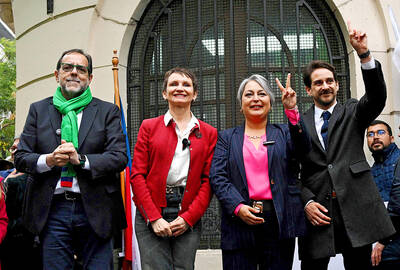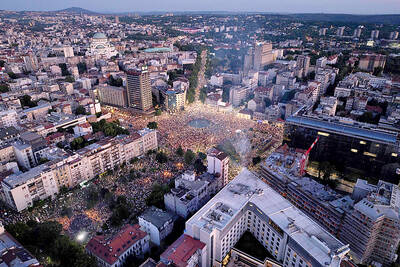The universe is getting younger every day, it seems.
New calculations suggest the universe could be a couple billion years younger than scientists estimate, and even younger than suggested by two other calculations published this year that trimmed hundreds of millions of years from the age of the cosmos.
The huge swings in scientists’ estimates — even the new calculation could be off by billions of years — reflect different approaches to the tricky problem of figuring the universe’s real age.
“We have large uncertainty for how the stars are moving in the galaxy,” said Inh Jee of the Max Planck Institute in Germany, lead author of the study in the journal Science.
Scientists estimate the age of the universe by using the movement of stars to measure how fast it is expanding.
If the universe is expanding faster, that means it got to its current size more quickly and therefore must be relatively younger.
The expansion rate, called the Hubble constant, is one of the most important numbers in cosmology.
A larger Hubble constant makes for a faster-moving — and younger — universe.
The generally accepted age of the universe is 13.7 billion years, based on a Hubble constant of 70.
Jee’s team came up with a Hubble constant of 82.4, which would put the age of the universe at about 11.4 billion years.
Jee used a concept called gravitational lensing — where gravity warps light and makes far away objects look closer.
The team relied on a special type of that effect called time-delay lensing, using the changing brightness of distant objects to gather information for the calculations, but Jee’s approach is only one of a few new ones that have led to different numbers, reopening a simmering astronomical debate of the 1990s that had been seemingly settled.
In 2013, a team of European scientists looked at leftover radiation from the Big Bang and pronounced the expansion rate a slower 67, while earlier this year Nobel Prize-winning astrophysicist Adam Riess of the Space Telescope Science Institute used NASA’s super telescope and came up with a number of 74.
Another team earlier this year came up with 73.3.
Jee and outside experts had big caveats for her number.
She used only two gravitational lenses, which were all that were available, and so her margin of error is so large that it is possible the universe could be older than calculated, not dramatically younger.
Harvard University astronomer Avi Loeb, who was not part of the study, said it was an interesting and unique way to calculate the universe’s expansion rate, but the large error margins limit its effectiveness until more information can be gathered.
“It is difficult to be certain of your conclusions if you use a ruler that you don’t fully understand,” Loeb said in an e-mail.

Drug lord Jose Adolfo Macias Villamar, alias “Fito,” was Ecuador’s most-wanted fugitive before his arrest on Wednesday, more than a year after he escaped prison from where he commanded the country’s leading criminal gang. The former taxi driver turned crime boss became the prime target of law enforcement early last year after escaping from a prison in the southwestern port of Guayaquil. Ecuadoran President Daniel Noboa’s government released “wanted” posters with images of his face and offered US$1 million for information leading to his capture. In a country plagued by crime, members of Fito’s gang, Los Choneros, have responded with violence, using car

Two former Chilean ministers are among four candidates competing this weekend for the presidential nomination of the left ahead of November elections dominated by rising levels of violent crime. More than 15 million voters are eligible to choose today between former minister of labor Jeannette Jara, former minister of the interior Carolina Toha and two members of parliament, Gonzalo Winter and Jaime Mulet, to represent the left against a resurgent right. The primary is open to members of the parties within Chilean President Gabriel Boric’s ruling left-wing coalition and other voters who are not affiliated with specific parties. A recent poll by the

TENSIONS HIGH: For more than half a year, students have organized protests around the country, while the Serbian presaident said they are part of a foreign plot About 140,000 protesters rallied in Belgrade, the largest turnout over the past few months, as student-led demonstrations mount pressure on the populist government to call early elections. The rally was one of the largest in more than half a year student-led actions, which began in November last year after the roof of a train station collapsed in the northern city of Novi Sad, killing 16 people — a tragedy widely blamed on entrenched corruption. On Saturday, a sea of protesters filled Belgrade’s largest square and poured into several surrounding streets. The independent protest monitor Archive of Public Gatherings estimated the

Irish-language rap group Kneecap on Saturday gave an impassioned performance for tens of thousands of fans at the Glastonbury Festival despite criticism by British politicians and a terror charge for one of the trio. Liam Og O hAnnaidh, who performs under the stage name Mo Chara, has been charged under the UK’s Terrorism Act with supporting a proscribed organization for allegedly waving a Hezbollah flag at a concert in London in November last year. The rapper, who was charged under the anglicized version of his name, Liam O’Hanna, is on unconditional bail before a further court hearing in August. “Glastonbury,